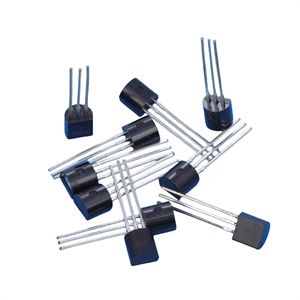Date:2024-11-26 Categories:Product knowledge Hits:382 From:Guangdong Youfeng Microelectronics Co., Ltd
Several common errors and analysis in Zener diodes
1. Imagining the characteristics of the Zener transistor too beautifully: when UW7V is used, the curve is decent. If we switch to a low-voltage one, such as 3V, the actual curve is really "soft". At 1.5V voltage, there is a lot of current, and it is not until IZ increases to tens of mA that UZ lazily reaches the nominal value, which is like a parabola.
2. For those who use Zener diodes for protection, without understanding that everything in the world comes at a cost, the cost here is the leakage current IR (IZ in the "cut-off" state): IR>0; I don't understand that everything in the world needs to have room for error. Here, the room for error is to ensure that the "cut-off" voltage margin UM: UM=UZ-UW>0 (IR → very small); Three do not understand that everything in the world has elasticity (concession), where elasticity refers to the increment of UW with the increase of IZ in the conducting state UP: UP=UW-UZ>0 (IR → very large). And even if there is room for maneuver and a cost is paid, concessions must still be made. To reduce IR, it is necessary to increase Δ U, which means selecting pipes with high UZ, but this will also reduce the "strength" of protection.
3. I don't understand that the dynamic internal resistance dV/dI of the Zener diode is greater than 0, which means UZ will increase with IZ. I won't say much about it.
4. I don't understand that the response of a Zener transistor is relatively slow. When UW changes, IZ does not immediately change, but there is a delay. And there is a junction capacitor, and sometimes the junction capacitor is quite large. According to the circuit diagram in the textbook, I connected the Zener transistor to the feedback arm of the operational amplifier for limiting, and I was proud of my ability to flexibly use the negative feedback technology of the operational amplifier. But after inputting a few MHz square waves, I found that the output was not the same, and I was confused.
From these, we can summarize some principles:
1. Try to avoid using low-voltage Zener diodes.
2. When using a Zener diode for protection, UZ should be selected reasonably to make UWMAX+UM3. The design of the circuit should have the concept of "dynamics". Like humans and all machines, circuits have the problem of slow response, with the only difference being "more sluggish" and "less sluggish".
Remember Murphy's Law: "Anything that can be worse will definitely be worse.

Previous: Classification, Structure, and Principle of MOSFET